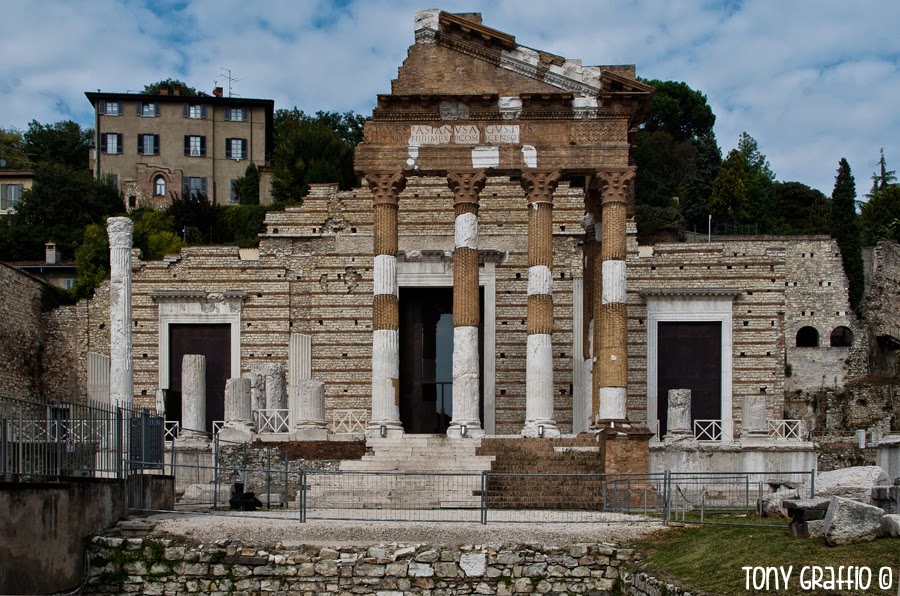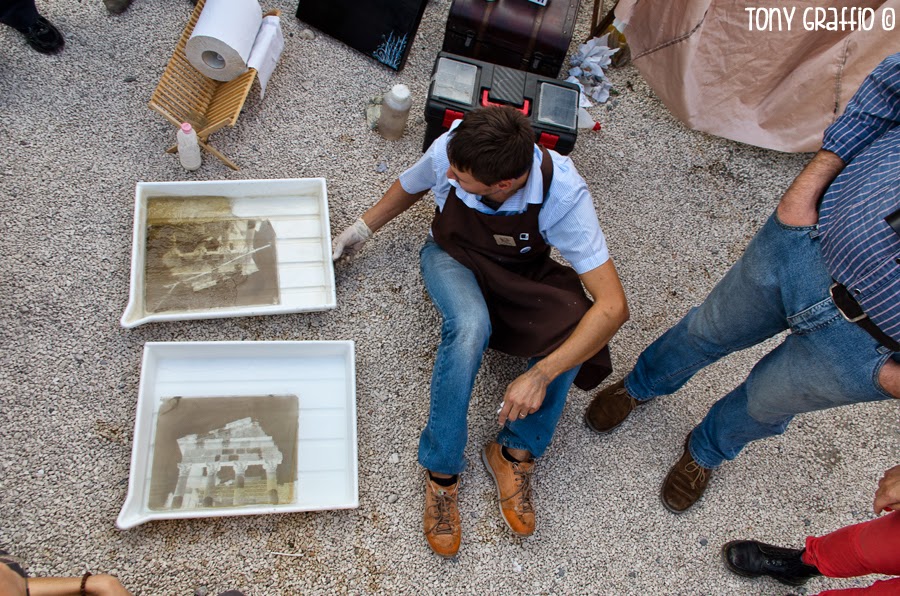Oggi è il 26 ottobre 2014. Esattamente 60 anni fa il Free Territory of Trieste (di fatto uno stato indipendente), in mano all'amministrazione degli americani, in quanto potenza vincitrice della Seconda Guerra Mondiale, veniva affidato allo stato italiano che avrebbe dovuto prenderlo in consegna fino a quando non sarebbe stata meglio definita la sovranità di quest'area che comprende la città di Trieste ed alcuni territori circostanti. Cosa che non avvenne mai.
Probabilmente, sulla posizione politica relativa al Territorio Libero di Trieste non si fece mai sufficientemente chiarezza a livello internazionale per non andare a modificare degli equilibri che si erano poi creati tra gli ex paesi belligeranti, di fatto si cercò d'accontentare più parti con una nuova revisione dei confini nel 1954 e far diluire nel tempo certi attriti che si erano creati tra le varie etnie presenti nell'area.
I sette anni che videro Trieste governata dagli americani e gli abitanti del TLT alle prese con le Am-lire, a detta di molti, furono un periodo piuttosto felice in cui ci fu un'immediata ripresa economica, parecchia spensieratezza ed un notevole incremento dell'emigrazione verso gli USA.
Più tardi, con la gestione del TLT da parte dell'Italia, le cose non andarono molto bene, poiché non ci fu molto interesse a sviluppare l'economia di queste luoghi, forse proprio a causa del suo Porto Franco.
E' bene chiarire una volta per tutte che il TLT continua ad essere un territorio a sé stante che non fa parte dell'Italia e di cui questo paese ha soltanto l'amministrazione provvisoria, non la sovranità. Questo fatto è facilmente comprensibile proprio osservando il regime fiscale speciale del porto franco di Trieste, consultabile anche sul sito dell'Autorità Portuale.
Il Porto Franco di Trieste , fondato dall’Imperatore Carlo VI nel 1719, si è sviluppato per merito della figlia Maria Teresa d’Austria, sino a divenire il Porto dell’Impero Austroungarico.
Probabilmente, sulla posizione politica relativa al Territorio Libero di Trieste non si fece mai sufficientemente chiarezza a livello internazionale per non andare a modificare degli equilibri che si erano poi creati tra gli ex paesi belligeranti, di fatto si cercò d'accontentare più parti con una nuova revisione dei confini nel 1954 e far diluire nel tempo certi attriti che si erano creati tra le varie etnie presenti nell'area.
I sette anni che videro Trieste governata dagli americani e gli abitanti del TLT alle prese con le Am-lire, a detta di molti, furono un periodo piuttosto felice in cui ci fu un'immediata ripresa economica, parecchia spensieratezza ed un notevole incremento dell'emigrazione verso gli USA.
Più tardi, con la gestione del TLT da parte dell'Italia, le cose non andarono molto bene, poiché non ci fu molto interesse a sviluppare l'economia di queste luoghi, forse proprio a causa del suo Porto Franco.
E' bene chiarire una volta per tutte che il TLT continua ad essere un territorio a sé stante che non fa parte dell'Italia e di cui questo paese ha soltanto l'amministrazione provvisoria, non la sovranità. Questo fatto è facilmente comprensibile proprio osservando il regime fiscale speciale del porto franco di Trieste, consultabile anche sul sito dell'Autorità Portuale.
Il Porto Franco di Trieste , fondato dall’Imperatore Carlo VI nel 1719, si è sviluppato per merito della figlia Maria Teresa d’Austria, sino a divenire il Porto dell’Impero Austroungarico.
A seguito del Trattato di Parigi del
1947 e del Memorandum di Londra del 1954, il Porto Franco ha
conservato le sue peculiarità ed i vantaggi dell’impianto
normativo derivanti dal mantenimento della legislazione speciale sia
doganale che fiscale.
Il Porto franco si compone di 5 Punti
Franchi: Punto Franco Vecchio, Punto Franco Nuovo, Punto Franco Scalo
Legnami, Punto Franco Oli Minerali e Punto Franco Industriale.
Di seguito, alcune informazioni sulle
principali peculiarità e vantaggi dei punti Franchi del Porto di
Trieste.
Equiparazione di tutte le Bandiere: tutte le navi che attraccano nel porto
Franco sono equiparate a quelle di bandiera Italiana e beneficiano
automaticamente del pagamento ridotto dei diritti marittimi Iva, dazi e diritti
Per le merci importate nella Comunità
Europea, il pagamento di Iva e dazi può essere posticipato sino a
6 mesi, con l’applicazione di un tasso di interesse molto limitato
e pari al 50% dell'Euribor a 6 mesi.
Le merci possono restare in deposito
all'interno del Porto senza limiti di tempo e possono essere
spedite verso destinazioni oltremare senza bisogno di dichiarazione
doganale comunitaria. Il Porto di Trieste adotta il principio della libertà di transito e di accesso, oltre a quello della extraterritorialità doganale.
L'Italia non ha mai ben digerito questa imposizione del Porto Franco, non potendo togliere questo ordinamento fiscale voluto dalle potenze internazionali, ha sempre cercato di dirottare le merci destinate a Trieste ad altri porti, compreso quello di Gioia Tauro, pur di non dover rinunciare alle imposte incamerabili, in quei casi, direttamente da Roma.
Nel tentativo di boicottare il porto, Roma è arrivata perfino a progettare un rigassificatore da collocare all'interno del Golfo di Trieste che ovviamente otterrebbe il risultato di bloccare completamente l'attività commerciale marittima.
Questo è solo un esempio della malagestione italiana, il resto lo conosciamo un po' ovunque, non soltanto a Trieste.
Non c'è quindi da stupirsi, se di recente è venuto ad organizzarsi un movimento di cittadini triestini che sta chiedendo che venga rispettata l'indipendenza del TLT e che cessino le ingerenze italiane negli affari interni a questi territori.
A seguito di un miglioramento dei rapporti tra Italia ed i vicini di frontiera ad Est, che negli anni non sono più gli jugoslavi, ma gli sloveni, il Buco Nero d'Europa, ovvero una delle pochissime zone al mondo oscurate da Google Map, il vecchio porto Austroungarico con i suoi circa 600.000 mq e più di una settantina di edifici monumentali è stato pian, piano smilitarizzato, al punto da non ostacolare più l'acceso ai podisti che amano recarsi qui a correre, ai curiosi come me che si sono introdotti a far fotografie e a chi transita da quest'area per altri motivi.
L'area però fa gola a molti speculatori edilizi che qui vorrebbero demolire tutto per costruire centri commerciali o altre strutture.
Testo e fotografie di Tony Graffio Tutti i diritti riservati
L'area però fa gola a molti speculatori edilizi che qui vorrebbero demolire tutto per costruire centri commerciali o altre strutture.
Testo e fotografie di Tony Graffio Tutti i diritti riservati
Veduta dell'edificio 7
View of the building n. 7
Super Speed Graphic with Wollensak Optar 127mm (Agfa APX 100 1/15 sec f 16)
Ursus
Super Speed Graphic with Wollensak Optar 127mm (Agfa APX 100 1/30 sec f 16)
The old Port of Trieste, a place where time has stopped
Today is October 26,
2014. Exactly 60 years ago the Free Territory of Trieste (in fact an
independent state) passed by the American administration, as a
victorious power of World War II, in the hands of the Italian state
that was supposed to take over until it would have been a better
defined sovereignty in this area, including the city of Trieste and
some surrounding areas, but this never happened.
Probably, the political
position on the Free Territory of Trieste was never defined to avoid
to change the balance created between the ex belligerents.
In 1954 there was a
revision of the borders to try to please Italy and Jugoslavia and to
prevent some friction that had developed between the various ethnic
groups in the area.
During the 7 years of the
american governement of the TLT, the inhabitants of this area were
quite happy, they had their own currency, the Am-lira and they took
advantage of an immediate economic recovery, a bit of
light-heartedness and a significant increase of emigration to the US.
Later, with the
management of the FTT by Italy, things did not go very well, because
there was not much interest in developing the economy of these
places, just because of its free port.
It's good to clarify once
and for all that the FTT continues to be a territory of its own that
is not part of Italy and that Italy has only the interim
administration, not sovereignty. This fact is easily understood by
observing the special tax regime of the free port of Trieste, also
available on the website of the Port Authority.
The Free Port of Trieste,
founded by Emperor Charles VI in 1719, has grown to about his
daughter Maria Theresa of Austria, to become the Port of the
Austro-Hungarian Empire.
Following the Treaty of
Paris of 1947 and the London Memorandum of 1954, the Free Port has
preserved its characteristics and advantages of the regulatory
framework involved in the maintenance of the special legislation is
customs tax.
The Free Zone has 5
points Franks: Punto Franco Vecchio, New Punto Franco, the Free Port
timber terminal, the Free Port and Free Port Industrial Mineral Oils.
Below is some information
on the main features and advantages of the points of the Franks Port
of Trieste.
Assimilation of all Flags
All ships calling at the
port Franco are equivalent to those of the Italian flag and
automatically qualify for the reduced payment of VAT maritime rights,
duties and rights
For goods imported into
the European Union, the payment of taxes and duties may be delayed up
to 6 months, with the application of a very low interest rate and 50%
of the Euribor at 6 months.
The goods can be stored
inside the port with no time limit and can be shipped to overseas
destinations without the need for customs declaration Community. The
Port of Trieste adopts the principle of freedom of transit and
access, as well as that of extraterritoriality customs.
Italy has not digested
well this imposition of the Free Port, unable to remove this tax
system desired by the international powers, has always tried to
divert goods to Trieste to other ports, including Gioia
Tauro (1000 km away), because Italy could earn much money to bring to Rome using other ports.
In an effort to boycott
the port of Trieste, Rome came even to design an LNG terminal to be placed in
the Gulf of Trieste, which of course would get the result to block completely the maritime business.
This is just one example
of italian mismanagement, the rest we know a little everywhere, not
only in Trieste.
Do not be surprised,
then, if recently some people from Trieste came to organize a
movement of citizens who is asking for the respect of the
independence of the Free Territory and Italian cease meddling in the
internal affairs of these territories.
As a result of an
improvement in relations between Italy and the nearby border to the
east, over the years are no longer the Yugoslavs, but the Slovenes,
the Black Hole of Europe, which is one of the few areas in the world
darkened by Google Map, the old Austro-Hungarian port with about
600,000 square meters and more than seventy of monumental buildings
has been slowly demilitarized, to the point of no longer prevented
the access to runners who like to come here, or to the curious like
me that entered in this place to make photographs, or those who pass
through this area for any other reasons.
The area however is
tempting to many speculators who want to demolish everything here to
build shopping centers or other facilities. Tony Graffio
All the color pictures were made with Pentax K-01 and zoom 18-55mm




















































